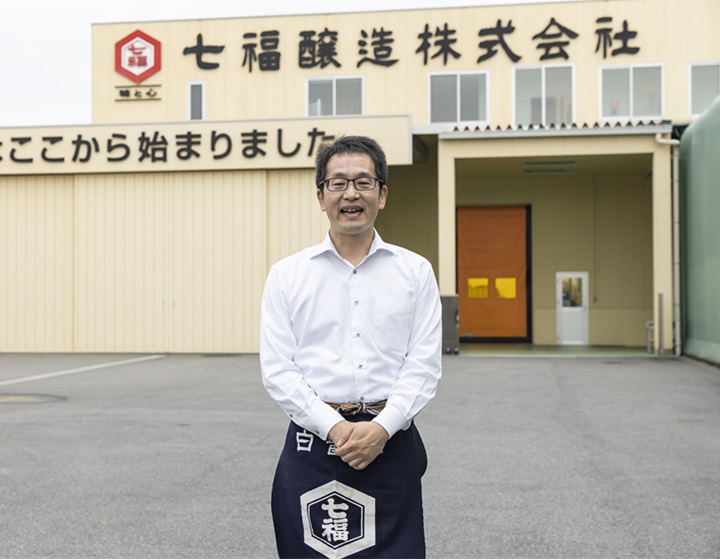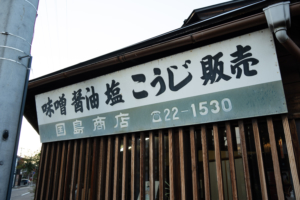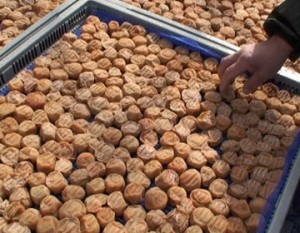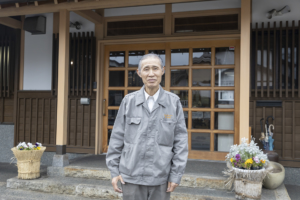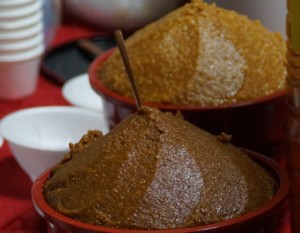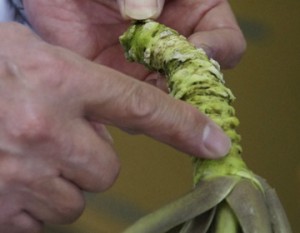Shiro-dashi is a clear, amber-colored soup stock that enhances the flavor of ingredients. The product is now widely used throughout Japan, but Shichifuku Brewery in Hekinan City, Aichi Prefecture, was the first company to produce this white dashi. The company’s president, Motohiro Inuzuka, is well respected in the brewing industry as a pioneer in popularizing white dashi, which was born from the voices of chefs, in ordinary households.
Hekinan City (Hekinan) is a brewing town blessed with abundant water and land

Hekinan City is located about 40 km southeast of Nagoya, the center of Aichi Prefecture. Surrounded by water, with Aburagafuchi to the north, the Yahagigawa River to the east, and Kinuura Port to the west and south, the city is blessed with a warm climate and climate. The population is about 75,000. In this small town, there are more than 10 companies involved in brewing soy sauce, sake, mirin (sweet sake), miso, and other products, which shows how well suited the area is for brewing.
It is believed that the brewing culture developed in the Mikawa area, where Hekinan City is located, because of the stable availability of wheat, soybeans, and rice, the raw materials for brewed products, during the postwar food shortage and the abundance of water sources used for brewing. Another factor that is said to have contributed to the great leap forward in the brewing industry was its proximity to ports and well-developed shipping routes, which made it easy to ship products.
Why is soy sauce white? Wheat ratio and fermentation period are key

Under the Japanese Agricultural Standards Law (commonly known as the JAS Law), soy sauce is classified into five types: dark, light, re-finish, tamari, and white soy sauce. The origin of soy sauce is said to date back more than 1,000 years, but according to literature, white soy sauce has a shorter history than other soy sauces, having been on the market for less than 80 years.
Soy sauce is made differently depending on the ratio of soybeans, wheat, salt, and water used as ingredients, as well as the length of the brewing period. Shiro shoyu is made with more wheat and requires a shorter fermentation period, so it is characterized by the natural sweetness and aroma of the ingredients. It is also light in color and does not easily color dishes, which makes it very useful in restaurants that are particular about the appearance of their food.
However, dark soy sauce is still not widely used at home. While dark soy sauce accounts for 80% of the market share, white soy sauce accounts for less than 1%.
White dashi was created at the request of a chef.

Nanafuku Brewery started in 1951 as a brewing and sales company specializing in white soy sauce. Even today, Shichifuku Brewery is the only soy sauce maker in Japan that specializes in white soy sauce.
Compared to dark soy sauce and other so-called “black soy sauces,” white soy sauce is in lower demand in the average household. Of course, this is proportional to its share of the market, but why did the company decide to specialize in producing this type of soy sauce?
The main reason is that Hekinan City is the birthplace of white soy sauce, and Inuzuka’s grandfather Akemoto, the founder of the company, learned to brew white soy sauce there before founding the company. The ratio of wheat and soybeans used in black soy sauce and white soy sauce is different. Each soy sauce is made from wheat and soybean malt, but in the case of black soy sauce, the ratio is almost 50-50. In the case of black soy sauce, the ratio is about 50-50, but in the case of white soy sauce, the ratio is 9 to 1, with most of the koji being made from wheat. The brewing period is also different: black soy sauce takes one to three years to brew, while white soy sauce takes only two to three months. Wheat koji and short brewing time are the two factors that affect the lightness of the color of the liquid. To brew both types of soy sauce would simply require twice as much equipment, so although he understood that the market share for white soy sauce was low, he chose to brew white soy sauce in the spirit of “I’ve learned a lot and it’s from my hometown,” and started a brewing company specializing in white soy sauce.
Unintentionally, however, this matched Shichifuku Brewing’s commitment.
The company has been particular about ingredients since its establishment and now uses organically grown wheat and soybeans as the raw materials for all of its castle soy sauce. And white soy sauce itself is mostly in demand from kappo (Japanese-style cooking) and ryotei (Japanese-style restaurants), which are particular about beautiful appearance. As a result, the two sides of the business have enhanced each other’s product value, and inquiries from professional chefs seeking authentic taste have increased.
However, “white soy sauce” is a seasoning for professional use, and when it came to sales, it was not all smooth sailing. However, the company continued to improve its brewing techniques, earnestly pursuing its motto of “pursuing the best taste.
It was around 1970 that the company reached a turning point. A chef at a hotel in Gifu asked the company for advice. Normally, they made chawan-mushi (steamed rice in a bowl) by mixing dashi broth with white soy sauce and allowing it to cool, but when they had to cook for more than 100 people at a banquet, they felt it was a bit time-consuming. He then asked Atsunori Inuzuka, Inuzuka’s father (now chairman), who was an old acquaintance of his, “When there are group guests at banquets, etc., if you run out of the mixture, you have to make more each time, which takes up time. But if there is too much left over, it has to be thrown away, so it cannot be left over, which is not very efficient. He asked us if it would be possible to make a preparation that combines the dashi and white soy sauce in advance.
After three to four years of trial and error, he completed the product, which became the “ancestor” of today’s white dashi.
Because of its ease of use, white dashi spread throughout the restaurant industry and began to be used. When it was first sold, it was often used in ryotei (Japanese-style restaurants) that served Japanese cuisine, but it gradually came to be used in Chinese, Italian, and other genres of cuisine.
Real flavor comes from real ingredients.
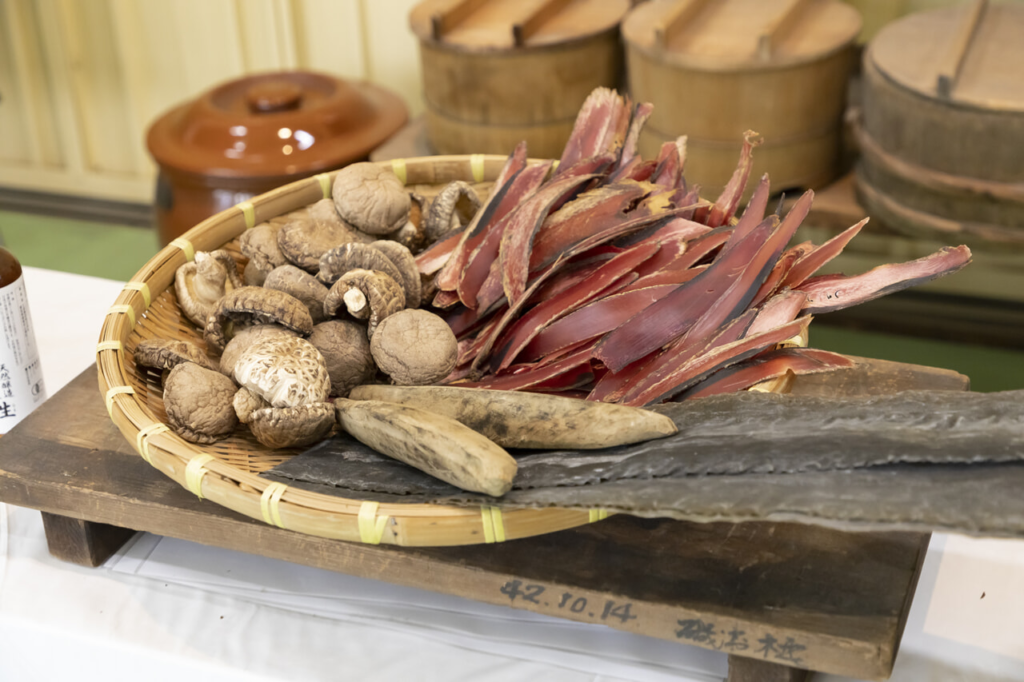
The white soy sauce that forms the base of the white dashi is made mainly from organic JAS-certified wheat and soybeans. The soup stock added to it is mainly bonito flakes produced in Makurazaki, Kagoshima, and the use of honkare flakes has remained unchanged since its development. Dashi broth is said to be difficult to find the right balance between the tastes of the Kanto and Kansai regions, but we aimed to create a flavor and aroma that would be easily accepted anywhere in Japan by using our own unique blend. The white dashi is completed by adding kombu and shiitake mushroom broth, salt, and Mikawa-produced hon mirin (Japanese sweet cooking rice wine).
Based on the flavor of wheat and soybeans slowly drawn out at a low temperature
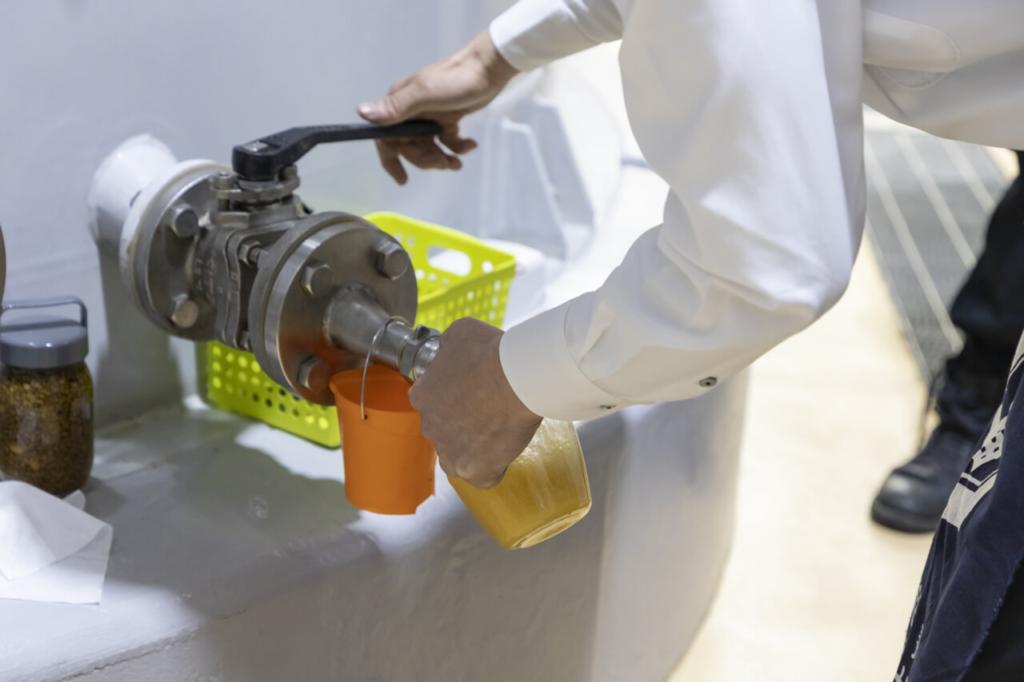
As with the raw materials, we are particular about the manufacturing process. The longer soy sauce is aged, the darker the color becomes. On the other hand, if the aging period is too short, the flavor of the wheat and soybeans is not fully expressed. Therefore, Nanafuku Brewery uses refrigerated tanks during the brewing process to slowly and deliberately bring out the flavor at a low temperature. Mr. Inuzuka explains, “Cooling the tanks makes production less efficient. I’ve heard of places warming up the tanks, but we may be the only company that cools them down.
In fact, if you pour the soy sauce from the tank into a cup before filtering or flame broiling, you can directly taste the umami and flavor, but in this state, the saltiness is too low and the umami component too strong to be called JAS-standard soy sauce. However, in this state, the soy sauce is not salty enough to be called JAS-standard soy sauce because it has too much umami.
Professional taste is why we want you to use it for home cooking.
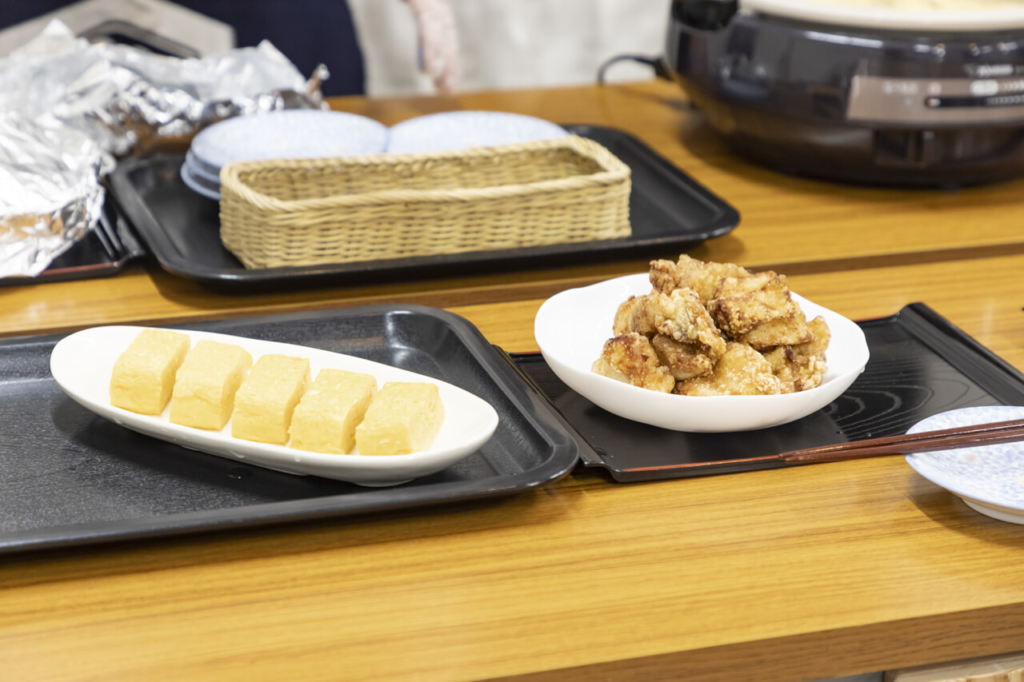
At the time of its launch, white dashi was created in response to requests from professional chefs, so it was sold in commercial-use bottles for restaurants.
When the company began selling it in small quantities for home use, it became a hot topic because it could be used to make restaurant-like dishes at home, and the popularity of the product spread rapidly. On the other hand, many people were puzzled at the time because they did not know how to use the new seasonings, which were unfamiliar to them.
Even today, compared to dark soy sauce, Inuzuka feels that many people still do not understand its uses. In such cases, he suggests, “I think most people use salt when cooking, but if you could use white dashi in place of salt,” he says.
With the tradition and pride of being “the originator of white dashi
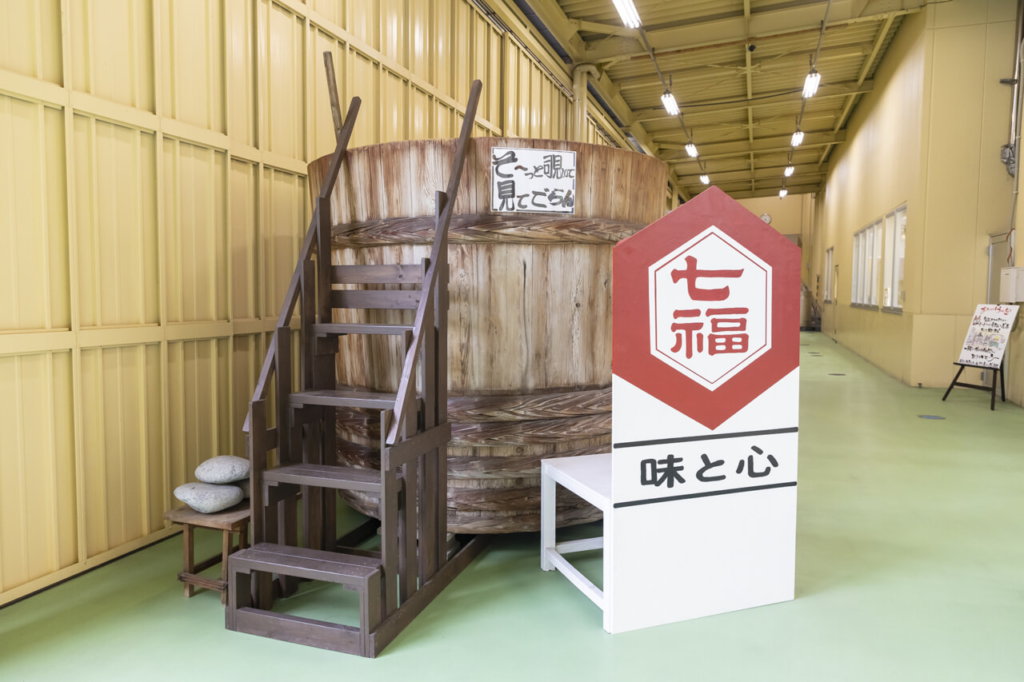
Brewers generally make more than one product, such as soy sauce or miso,” Inuzuka says proudly. However, we are the only company in Japan that makes only white soy sauce,” Inuzuka proudly states. The reason why they do not produce black soy sauce, even though the company has grown in size, is because they are proud to be the only “white soy sauce organic JAS certified factory” and “the originator of white dashi” in Japan.
Mr. Inuzuka is eager to spread the white soy sauce, which has an elegant aroma and sweetness and does not add unnecessary color to ingredients, and the white dashi produced at this brewery to ordinary households. The white soy sauce is the cornerstone of this authentic seasoning, which was born from the voices of chefs. Hekinan City, the kingdom of brewing, delivers professional taste.



